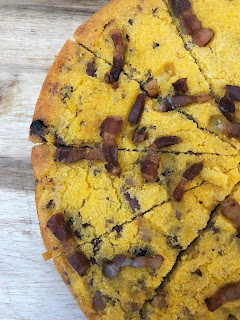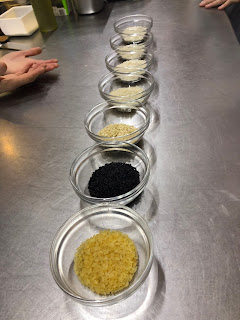Admiring Abruzzo & Molise
The regions of Abruzzo and Molise used to create one larger region, also including Circondario di Cittaducale, which is now part of Lazio. Today, the Italians still refer to Abruzzo and Molise as one.
Here is some history I researched about these two regions:
During the time of the Normans, Abruzzo constituted one single justicor, an administrative district of which the Kingdom of Sicily was divided. Then during the Angevin period, the province was divided into 2: the Abruzzo Ulterior and the Abruzzo Citeriore. There was a river flowing between these two areas, forming their natural border. During the Napoleonic and Murat reforms in the 19th century, Abruzzo Ulterior was turned into another 2 districts: Abruzzo Ulterior I and Abruzzo ulterior II. This means that at this time, there were 3 provinces creating one Abruzzo. During the reign of Frederick II, the territory of Molise was constituted. Although it struggled to have administrative autonomy, Molise began to be considered a territory. Until 1538, Molise was connected to the Terra di Lavora.
Even though these regions are really one, just divided by a river, the populations of people never were unified as one. This is actually the main reason why during the Roman conquering, they had no chance. The Romans came in and dominated from the beginning. Although the Romans conquered, they were good to this region, creating ports along the sea, helping the region. With seaports, comes trade of goods, ideas, and people, which through history shows high importance. This region, like Basilicata, had no important families living there, thus they have a very simple, peasant cuisine. There are just traditions in the kitchen, no cookbooks or proof of large banquets.
The way the people fish in Abruzzo and Molise is very interesting. It is called traocco, a very old way of fishing. Houses are built along the coast and a net is attached. The net is dropped and they catch fish small fish like sardines and anchovies. This type of fishing is also seen along the coast in Northern Puglia, a bordering region of Abruzzo and Molise.
The land of Abruzzo and Molise has deep traditions, one being the Transumanza. This is a trip the shepherds and sheep take from the high mountains to the flatlands in fall and go back in the spring. This trip takes at least 1 month and for Abruzzo and Molise, the trip ends in Foggia, Puglia. This is the largest Transumanza in Italy, stretching more than 200 kilometers. The Transumanza shows the importance of sheep in their society, therefore there is a lot of lamb, sheep, and sheep's cheese consumed and made in this region. One of these cheeses is the Canestrato di Castel del Monte, which is made in the high pastures of Fran Sasso with traditional methods. This Slow Food Procedure cheese is made with of course sheep's milk and is aged from 2 months to 1 year. The taste is very strong and spicy, and it is good eaten alone or grated on top of different dishes.
Fun Fact of the Day
List some traditional dishes from the region of Abruzzo and Molise.
- Brodo di Cardone: This is a dish traditionally made for Christmas and is a meat broth with cardoons, little meatballs, and cheese. It has a unique flavor as the broth is thickened with eggs and cheese, but extremely flavorful.
- Pizz' e foje: For this dish, a thin "polenta" is baked and allowed to dry. It is then crushed up and mixed with different wild greens like chicory and spinach.
- Pasta alla chitarra: This is the traditional pasta of the region which is a little thicker and more square strands. It is served with a hearty sauce like lamb ragu or a tomato sauce.
- Scrippelle: This is kind of like a crepe but also like an omelet, just about the middle! It is rolled up and served in a broth.
- Crioli: This is a pasta dish made with durum wheat flour and eggs. It is typically served with salted cod and walnut sauce, meat sauce, or truffle.
- Pallotte Cacio e Uova: This dish is made with stale bread, pecorino, green pepper, tomato, egg, and onion. It is often eaten as an appetizer.
- Mazzaelle: This dish is made into little rolls with the inners of the lamb wrapped in endive or escarole. It is then either cooked by themselves or in a sauce.
- Ndocca: Finally, this dish is a boiled/braised pork meat dish. It is made with the second choice parts like the ears, snout, tail, tongue, etc. because the prime cuts were made into salumi and sold. The blood is even cooked, diced, and then added to the meat.
Today I made Pastuccia, a sort of "bread" made with corn flour, water, sausage, raisins, eggs, and guanciale. A sort of polenta is made in the beginning to form a dough and then the rest is added it. It is very simple with a uniqe flavor. I think it would have been better if it was not so thick, as it was very rich and caloric. I would make it thinner and remove the raisins as I did not feel that they added anything to the bread.
With love,
Baylee
Here is some history I researched about these two regions:
During the time of the Normans, Abruzzo constituted one single justicor, an administrative district of which the Kingdom of Sicily was divided. Then during the Angevin period, the province was divided into 2: the Abruzzo Ulterior and the Abruzzo Citeriore. There was a river flowing between these two areas, forming their natural border. During the Napoleonic and Murat reforms in the 19th century, Abruzzo Ulterior was turned into another 2 districts: Abruzzo Ulterior I and Abruzzo ulterior II. This means that at this time, there were 3 provinces creating one Abruzzo. During the reign of Frederick II, the territory of Molise was constituted. Although it struggled to have administrative autonomy, Molise began to be considered a territory. Until 1538, Molise was connected to the Terra di Lavora.
Even though these regions are really one, just divided by a river, the populations of people never were unified as one. This is actually the main reason why during the Roman conquering, they had no chance. The Romans came in and dominated from the beginning. Although the Romans conquered, they were good to this region, creating ports along the sea, helping the region. With seaports, comes trade of goods, ideas, and people, which through history shows high importance. This region, like Basilicata, had no important families living there, thus they have a very simple, peasant cuisine. There are just traditions in the kitchen, no cookbooks or proof of large banquets.
The way the people fish in Abruzzo and Molise is very interesting. It is called traocco, a very old way of fishing. Houses are built along the coast and a net is attached. The net is dropped and they catch fish small fish like sardines and anchovies. This type of fishing is also seen along the coast in Northern Puglia, a bordering region of Abruzzo and Molise.
The land of Abruzzo and Molise has deep traditions, one being the Transumanza. This is a trip the shepherds and sheep take from the high mountains to the flatlands in fall and go back in the spring. This trip takes at least 1 month and for Abruzzo and Molise, the trip ends in Foggia, Puglia. This is the largest Transumanza in Italy, stretching more than 200 kilometers. The Transumanza shows the importance of sheep in their society, therefore there is a lot of lamb, sheep, and sheep's cheese consumed and made in this region. One of these cheeses is the Canestrato di Castel del Monte, which is made in the high pastures of Fran Sasso with traditional methods. This Slow Food Procedure cheese is made with of course sheep's milk and is aged from 2 months to 1 year. The taste is very strong and spicy, and it is good eaten alone or grated on top of different dishes.
Fun Fact of the Day
List some traditional dishes from the region of Abruzzo and Molise.
- Brodo di Cardone: This is a dish traditionally made for Christmas and is a meat broth with cardoons, little meatballs, and cheese. It has a unique flavor as the broth is thickened with eggs and cheese, but extremely flavorful.
- Pizz' e foje: For this dish, a thin "polenta" is baked and allowed to dry. It is then crushed up and mixed with different wild greens like chicory and spinach.
- Pasta alla chitarra: This is the traditional pasta of the region which is a little thicker and more square strands. It is served with a hearty sauce like lamb ragu or a tomato sauce.
- Scrippelle: This is kind of like a crepe but also like an omelet, just about the middle! It is rolled up and served in a broth.
- Crioli: This is a pasta dish made with durum wheat flour and eggs. It is typically served with salted cod and walnut sauce, meat sauce, or truffle.
- Pallotte Cacio e Uova: This dish is made with stale bread, pecorino, green pepper, tomato, egg, and onion. It is often eaten as an appetizer.
- Mazzaelle: This dish is made into little rolls with the inners of the lamb wrapped in endive or escarole. It is then either cooked by themselves or in a sauce.
- Ndocca: Finally, this dish is a boiled/braised pork meat dish. It is made with the second choice parts like the ears, snout, tail, tongue, etc. because the prime cuts were made into salumi and sold. The blood is even cooked, diced, and then added to the meat.
Today I made Pastuccia, a sort of "bread" made with corn flour, water, sausage, raisins, eggs, and guanciale. A sort of polenta is made in the beginning to form a dough and then the rest is added it. It is very simple with a uniqe flavor. I think it would have been better if it was not so thick, as it was very rich and caloric. I would make it thinner and remove the raisins as I did not feel that they added anything to the bread.
With love,
Baylee




Comments
Post a Comment